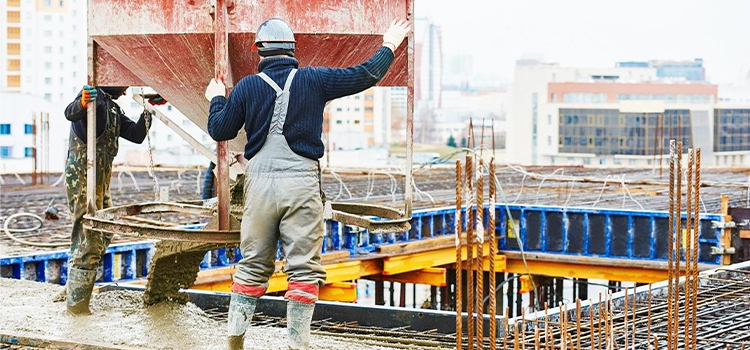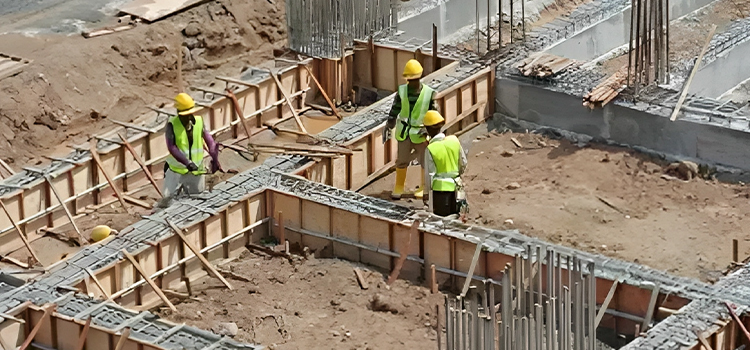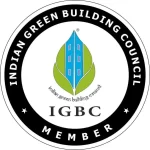About GFRP Composite Rebars:
In the dynamic construction industry, GFRP (Glass Fiber Reinforced Polymer) rebars have emerged as a ground-breaking solution, revolutionising the industry. These rebars possess unrivalled material properties that make them an exceptional alternative to traditional reinforcement methods, while meeting industry standards for safety and performance. As the construction industry seeks solutions that improve durability, reduce maintenance costs, and promote environmentally-friendly practices, GFRP rebars have gained significant attention and are reshaping the way we reinforce concrete structures.
GFRP rebars are composite materials made from a combination of high-strength glass fibers and a polymer matrix, typically consisting of epoxy or vinyl ester resin. This unique composition results in rebars that possess characteristics that set them apart from conventional reinforcement options. GFRP rebars are renowned for their superior strength-to-weight ratio, corrosion resistance, non-magnetic properties, and compliance with industry standards such as ACI 440.1R-22.
Benefits and Uses of GFRP Rebars:
One of the key benefits of GFRP rebars is their significantly lighter weight compared to traditional steel reinforcement. This characteristic makes them easier to handle, transport, and install, thereby reducing labour costs and project timelines. Additionally, the lightweight nature of GFRP rebars advantages the construction of structures with reduced dead loads, leading to more efficient and sustainable designs.
By leveraging the non-magnetic property of GFRP rebars, construction projects can benefit from enhanced precision, reduced interference, and improved performance in environments that require electromagnetic neutrality or have specific electrical grounding requirements. This demonstrates the versatility and innovative potential of GFRP rebars in addressing unique challenges and specialised applications in the construction industry.
Unlike steel rebars, GFRP rebars exhibit exceptional resistance to corrosion. This superior corrosion resistance eliminates the risk of rust-related deterioration, extends the service life of concrete structures, and reduces maintenance requirements. GFRP rebars are particularly well-suited for harsh environments such as coastal areas or chemically aggressive settings, where corrosion poses a significant challenge for traditional reinforcement. These rebars have emerged as a reliable alternative to traditional steel rebars, offering a wide range of benefits for construction projects.
GFRP rebars offer the advantage of instilling non-magnetic and non-conductive properties. These properties make them ideal for applications where electromagnetic neutrality is critical, such as in proximity to sensitive equipment or in structures with specific electromagnetic requirements. GFRP rebar effectively eliminates electromagnetic interference and ensures optimal performance in these specialised environments.
Material Properties of GFRP Rebars:
1. High Tensile Strength:
GFRP rebars possess exceptional tensile strength, exceeding that of steel rebars on a weight-to-weight basis. This characteristic enables them to effectively carry tensile loads and resist cracking, resulting in durable and resilient structures. The high tensile strength of GFRP rebars contributes to enhanced structural integrity, especially in areas prone to seismic activity.
2. Flexural Strength:
GFRP rebars possess excellent flexural strength, enabling them to withstand bending forces without fracturing or losing their structural integrity. This property is crucial for applications where reinforced concrete members, such as beams or slabs, are subjected to flexural loads. GFRP rebars provide enhanced resistance against bending and help ensure the longevity and safety of structures.
3. Thermal and Chemical Resistance:
GFRP rebars exhibit excellent thermal and chemical resistance. They maintain their structural integrity even in extreme temperature variations, such as freeze-thaw cycles. GFRP rebars are also highly resistant to the corrosive effects of chemicals, alkalis, and acids commonly found in industrial or aggressive environments. This resistance ensures the long-term durability and reliability of structures reinforced with GFRP rebars.
4. Shear strength:
Shear strength is another important property of GFRP rebars. They exhibit exceptional resistance to shear stresses, making them suitable for applications where structures experience significant shear forces. GFRP rebars effectively distribute the applied loads and help prevent shear failures, thereby contributing to the overall stability and safety of the reinforced concrete elements.
Compliance with ACI 440.1R-22 Requirements:
ACI 440.1R-22 is a technical document by the American Concrete Institute (ACI) that outlines the requirements for GFRP (Glass Fiber Reinforced Polymer/Plastic) rebars in reinforced concrete structures.
ACI 440.1R-22 specifies the necessary material properties for GFRP rebars, including the glass fibers, polymer matrix, and manufacturing process. These requirements ensure the rebars meet strength, durability, and corrosion resistance standards. The document provides guidelines for conducting tests, such as tensile strength, bond strength, and durability, to evaluate the performance and reliability of GFRP rebars.
Testing methods, acceptance criteria, and sample sizes are outlined for consistent evaluation. ACI 440.1R-22 includes design guidelines for determining the appropriate size, spacing, and configuration of GFRP rebars in reinforced concrete structures. It covers design methodologies, load factors, and safety factors to ensure structural performance and safety.
Proper installation practices are crucial for GFRP rebars. The document provides detailed instructions for handling, cutting, bending, and securing the rebars during installation. It also covers achieving the necessary bond between rebars and concrete, and the use of appropriate connectors and anchorage systems. ACI 440.1R-22 addresses the long-term performance and resistance to environmental exposure of GFRP rebars. It provides guidance on assessing durability and potential degradation mechanisms to ensure rebars maintain structural integrity over time.
Adhering to the requirements of ACI 440.1R-22 ensures the proper selection, design, and installation of GFRP rebars in reinforced concrete structures. Compliance with these guidelines promotes the safe and reliable use of GFRP reinforcement, enhancing the overall quality and durability of construction projects.
Conclusion:
The advent of GFRP composite rebars has build way for a new era in construction, where lightweight, corrosion-resistant, and highly durable reinforcement materials are transforming the industry. The exceptional benefits and material properties of GFRP rebars, including their lightweight advantage, superior corrosion resistance, non-magnetic and non-conductive characteristics, compliance with ACI 440.1R-22 requirements, high tensile strength, flexural and shear strength, and thermal and chemical resistance, position them as a superior alternative to traditional reinforcement methods.
As the construction industry continues to embrace sustainable and resilient solutions, GFRP rebars are poised to play a pivotal role in shaping the infrastructure of the future, while meeting industry standards for safety and performance. GFRP rebars are also gaining traction among various stakeholders, including EPC contractors, architects, consultants, infrastructure companies, and government contractors.








